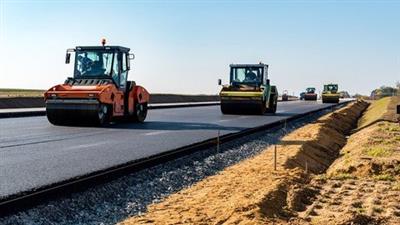Published 9/2022
MP4 | Video: h264, 1280×720 | Audio: AAC, 44.1 KHz
Language: English | Size: 1.31 GB | Duration: 4h 46m
GD&T (Basic & Intermediate level)
What you’ll learn
Learn the 14 GD&T symbols, their requirements and key terms in GD&T
In depth knowledge of Tolerance zones and limitations
Application of GD&T to drawings
Enables to communicate design requirements clearly that helps in saving cost and time
Requirements
No prior experience is required to learn GD&T. After learning the tool, it can be implemented in any software
Description
GD&T will help your company improve drawings, designs, and communication between engineers and suppliers. This training is essential to anyone who produces or interprets mechanical part drawings. After learning the tool you can implement it in any relevant software. This system is more powerful than the traditional dimensioning and tolerancing. Mechanical Industry ranging from Design, Quality, Production, Maintenance require detailed knowledge of GD&T.The best design in the world is worthless if it cannot be produced!The GD&T methodology is currently employed across many industries like automotive, heavy machinery, electronics, medical, defense, consumer goods, aviation and others.Goemetric Dimensioning and Tolerancing is an international language that is used on engineering drawings to accurately describe the size, form , orientation, location of part features. Since GD&T is drawn using line drawings, symbols and Arabic numerals, people everywhere can read write and understand it regardless of their native tongues.This is a very comprehensive Course where we teach you the GD&T as prescribed in the ASME Y14.5-2009 Standard which is the need of the hour in Industries.You’ll get an in-depth explanation of geometric symbols, including each symbol’s requirements, tolerance zones, and limitations. The class includes a comparison of GD&T to coordinate tolerancing; an explanation of tolerance zones; Rules #1 and #2; form and orientation controls; tolerance of position; runout and profile controls.
Overview
Section 1: Introduction
Lecture 1 Introduction
Lecture 2 Brief History
Lecture 3 Co-Ordinate Dimensioning System
Lecture 4 Intro to GD&T
Lecture 5 What is Y14.5
Lecture 6 GD&T Symbols
Lecture 7 2-3-4 Approach
Section 2: Fundamental Rules
Lecture 8 Fundamental Rule a
Lecture 9 Fundamental Rule e
Lecture 10 Fundamental Rule i
Lecture 11 Fundamental Rule j
Lecture 12 Fundamental Rule k
Lecture 13 Fundamental Rule l
Section 3: Key Terms
Lecture 14 Feature
Lecture 15 Feature Of Size
Lecture 16 Regular Feature Of Size
Lecture 17 Irregular Feature Of Size
Lecture 18 FOS Identification
Lecture 19 Material Conditions
Lecture 20 Actual Local Size
Lecture 21 Actual Mating Envelope
Lecture 22 Feature Control Frame
Lecture 23 Worst Case Boundaries
Section 4: General Rules
Lecture 24 Rule#1
Lecture 25 Exemption to Rule#1
Lecture 26 Rule#2
Section 5: Form Control
Lecture 27 Straightness Surface
Lecture 28 Straightness Verification
Lecture 29 Straightness on Prismatic Surface
Lecture 30 Straightness FOS
Lecture 31 Straightness FOS Dynamic tolerance dia
Lecture 32 Straightness Exercise
Lecture 33 Flatness Surface
Lecture 34 Flatness surface Verification
Lecture 35 Flatness FOS
Lecture 36 Flatness Exercise
Lecture 37 Circularity
Lecture 38 Circularity Verification
Lecture 39 Circularity Exercise
Lecture 40 Cylindricity
Lecture 41 Cylindricity – Verification
Lecture 42 Cylindricity Exercise
Section 6: Datum
Lecture 43 Datum Introduction
Lecture 44 Datum Reference Frame
Lecture 45 321 Principle
Lecture 46 Planar Datums
Lecture 47 Width datum
Lecture 48 Axis Datum
Lecture 49 Spherical Surface Datum
Lecture 50 Conical Surface Datum
Lecture 51 Linear Extrusion datum
Lecture 52 Complex Feature Datum
Lecture 53 Datum Targets
Section 7: Orientation Control
Lecture 54 Angularity Feature
Lecture 55 Angularity – FOS Center Plane
Lecture 56 Angularity – FOS Axis
Lecture 57 Angularity Verification
Lecture 58 Perpendicularity – Feature
Lecture 59 Perpendicularity – FOS Center Plane
Lecture 60 Perpendicularity – FOS Axis
Lecture 61 Parallelism – Feature
Lecture 62 Parallelism – FOS Center Plane
Lecture 63 Parallelism – FOS Axis
Lecture 64 Alternate Practice
Section 8: Tolerance of Location
Lecture 65 Tolerance of Position-l
Lecture 66 Tolerance Of Position-ll
Lecture 67 TOP Verification
Lecture 0 Top Verification Excel
Lecture 68 Concentricity
Lecture 69 Symmetry
Section 9: Runouts
Lecture 70 Radial Runout
Lecture 71 Total Runout
Lecture 72 Face Runout
Section 10: Profile Control
Lecture 73 Profile
Lecture 74 Profile Equally Disposed
Lecture 75 Profile between Modifier
Lecture 76 Profile Unilateral Inside
Lecture 77 Profile Unilateral Outside
Lecture 78 Profile Unequally Disposed
Lecture 79 Profile of a Line
Any freshers, experienced design engineers, quality inspectors, and those looking for a change over in job(interview tips)
HOMEPAGE
https://anonymz.com/?https://www.udemy.com/course/geometric-dimensioning-and-tolerancing-a/











Reviews
There are no reviews yet.